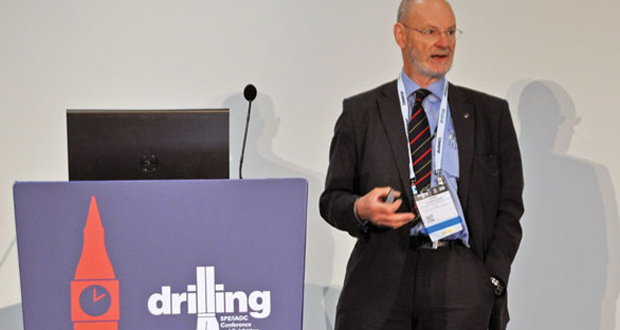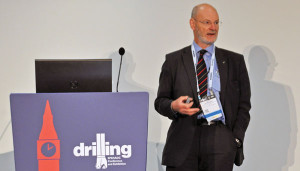Thorogood challenges industry to broaden views on safety, do more to understand, train drilling crews on human factors

By Alex Endress, Editorial Coordinator

While the drilling industry has tackled safety improvements from a myriad of angles since Macondo, it still has yet to fully and collectively explore human factors and their impact on drilling. “My rather skeptical take is that it’s a vulnerability we still have,” Dr John Thorogood, Drilling Engineering Advisor for Drilling Global Consultant, cautioned.
Awareness of this gap – and how it leaves the industry open to more incidents like Macondo – has steadily grown since the April 2010 blowout. Perhaps the most concrete evidence of this are IOGP Reports 501 and 502, which specifically address crew resource management training for wells operations teams. Yet, these guidelines are not the end of the road on drilling safety, Dr Thorogood emphasized. “We’ve sort of jumped to the conclusion that human factors solutions in the form of IOGP 501 is the answer… yet rigorous research into the human factors causes of the accident is still lacking, especially the psychological aspects. We have to be very careful if we think we can just get training organizations to implement 501 and 502, then it’s box ticked, job done,” he said.
In a presentation at the 2015 SPE/IADC Drilling Conference in London on 17 March, Dr Thorogood posited that Macondo was not a unique incident. Information in the public domain clearly shows that there is a common factor in many well control incidents – that the crews simply didn’t see what was about to happen, he said. “We really don’t understand why this is the case, but it challenges assumptions we make about the effectiveness of our risk assessment methods,” he said, adding that there is no real reason to suggest that the individuals involved in the Macondo well were incompetent or complacent. The decisions they made leading up to the blowout may appear irrational, but only with hindsight; at the time, they were rational people making rational decisions in the light of the situation as they saw it, he explained.
To understand this perspective, Dr Thorogood highlighted the Safety II concept, which was developed by psychology professor Erik Hollnagel. Under the traditional approach to safety (Safety I), accidents are believed to occur as a result of non-compliance or incompetence. “But it isn’t that simple,” Dr Thorogood said. “If you look at successful operations, you’ll probably find just as many non-conformances or non-compliances as when you do have an accident.”
Especially in complex environments – such as on a deepwater drilling rig – there’s a natural variability with which the same job is done from day to day. Ensuring procedural or operational discipline helps to a degree, Dr Thorogood said, but there will always be a gap between the way a procedure is written for a job and how that job is actually performed onsite.
The Safety II approach recognizes that there is great variability in complex systems, and the human in the loop is essential for a successful operation. “You have to train them and then trust them. You have to be confident that when they’re dealing with natural variability, they will make the right adaptation to make things go right,” he explained, adding that the trick is to have procedures in place to ensure effective control in cases where there is a significant departure from plan. “We can’t just focus on the man; the man is not the only problem,” Dr Thorogood said. “We’ve got to strengthen the man, but we’ve also got to strengthen the organization, and one way you strengthen it is by equipping teams with the attributes of high-reliability organizations. Examples, such as the US Nuclear submarine fleet and the discipline associated with its SUBSAFE program, serve as good models for us to emulate.
As the industry crosses the five-year mark on the Macondo tragedy, Dr Thorogood urges the drilling industry to further examine human factors and resist the temptation to believe the problem is solved. “Certainly, the focus on crew resource management and its integration into well control training is a promising start. My challenge is, have we really thought through and understood the real problem and answers? I offer this challenge because the moment we think we’ve solved the problem, we take our eye off the ball,” he said. “That’s what happened to NASA. They thought they’d learned from the Challenger launch decision catastrophe, and they sleepwalked back to Columbia 17 years later. That’s the challenge for our industry. The day that we think we’ve fixed Macondo is the day we’re going to have another one.”




